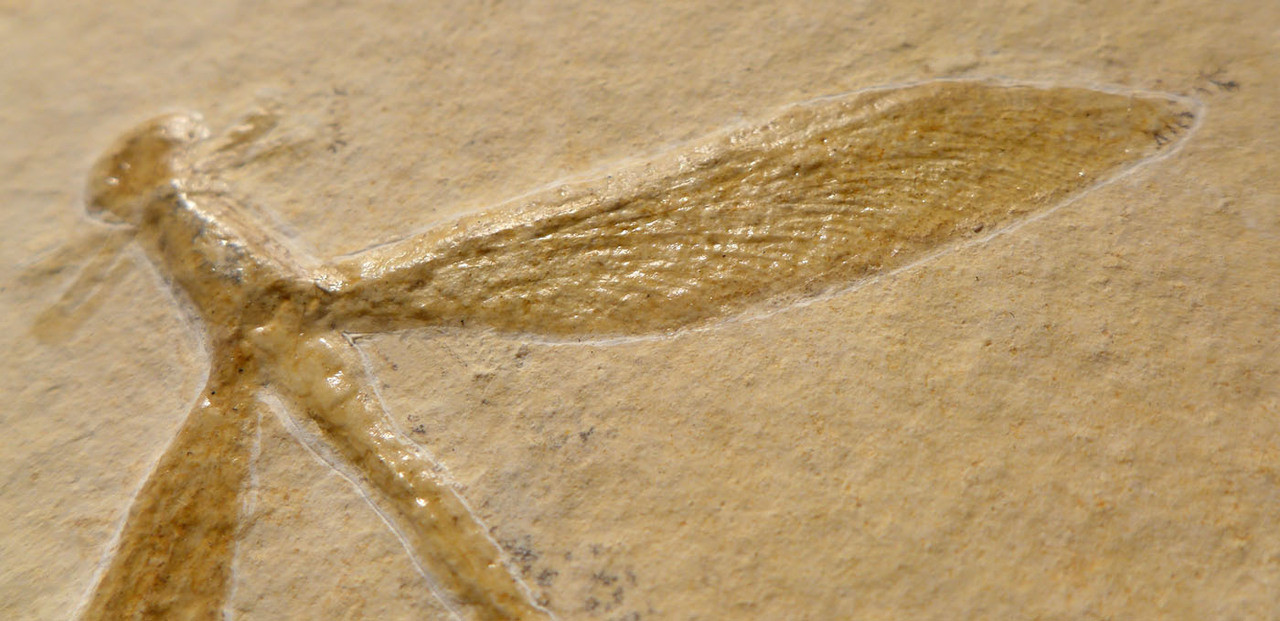Product Description
This is a beautiful example of a prehistoric dragonfly of the species Anisophelbia helle, from the Jurassic Period deposits of Solnhofen in Germany. Not to be confused with a damselfly, this is a true dragonfly of exceptionally fine preservation. Unlike many Solnhofen insect fossils that are nothing more than a crude body impression with all legs and wings lacking and painted on the rock artificially, you can clearly see very rare detail in the stone and protruding up from the stone. Only a coating of acrylic has been applied to the fossil to better see the detail of the delicate preserved anatomy. The body is very well-defined and delicate wing vein impressions can be seen in the photos above. This is an UNUSUALLY LARGE AND AESTHETIC stone plate the fossil is on and amazingly, it is unbroken. With the dragonfly is a floating crinoid fossil, one of the most faked Solnhofen invertebrate fossils.
The natural detail of the dragonfly and crinoid fossils make this a fantastic fossil to show AUTHENTIC and un-restored detail of the original fossils most often faked on the marketplace. Both of these fossils possess the kind of detail never seen in fakes, making this an excellent educational reference specimen to determine a forgery from a genuine fossil of these two types of life-forms. Most dragonfly fossils from Solnhofen are nothing more than painted outlines of an insect around a single line impression of the body. Pronounced detail as this fossil possesses is often lacking. This piece would make a fantastic and unique interior design accent as much as it would make a treasured acquisition to a prehistoric insect fossil collection made up of supreme grade specimens.
HISTORY
Famous for producing an astonishing diversity of rare and most intricately preserved fossils found anywhere in the world, the Solnhofen Lithographic Limestone Formation of southern Germany is legendary. Fine quality Solnhofen fossils are now much more rare than in past years. Many superb specimens come from old private collections as modern machinery destroys many fossils that were once easy to see and extract in the days of manual labor. Also, many quarries are now closed to commercial operations.
 US DOLLAR
US DOLLAR
 EURO
EURO
 AUSTRALIAN DOLLAR
AUSTRALIAN DOLLAR
 CANADIAN DOLLAR
CANADIAN DOLLAR
 POUND STERLING
POUND STERLING
























